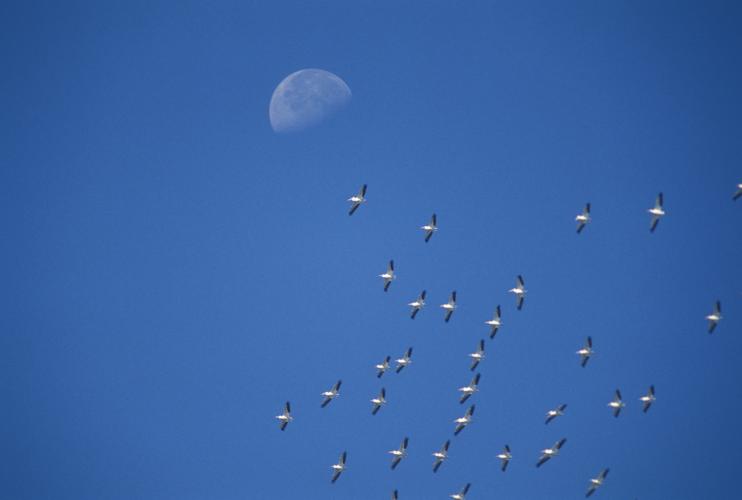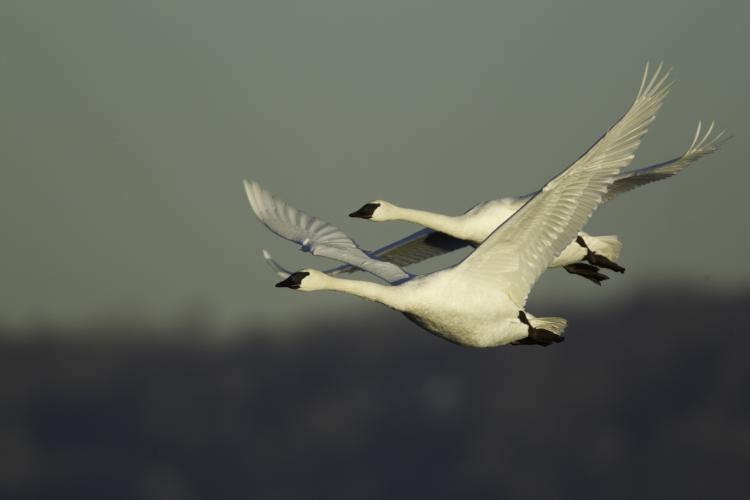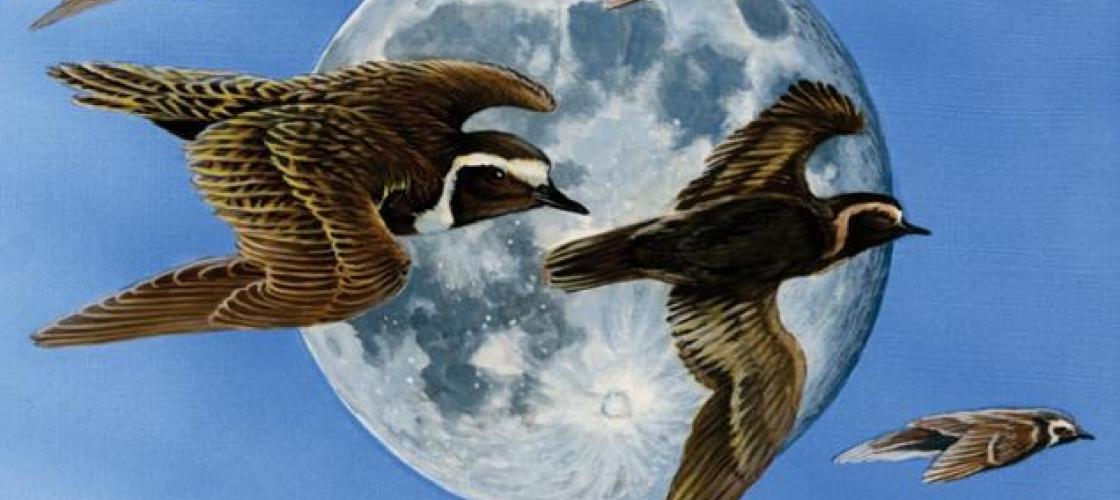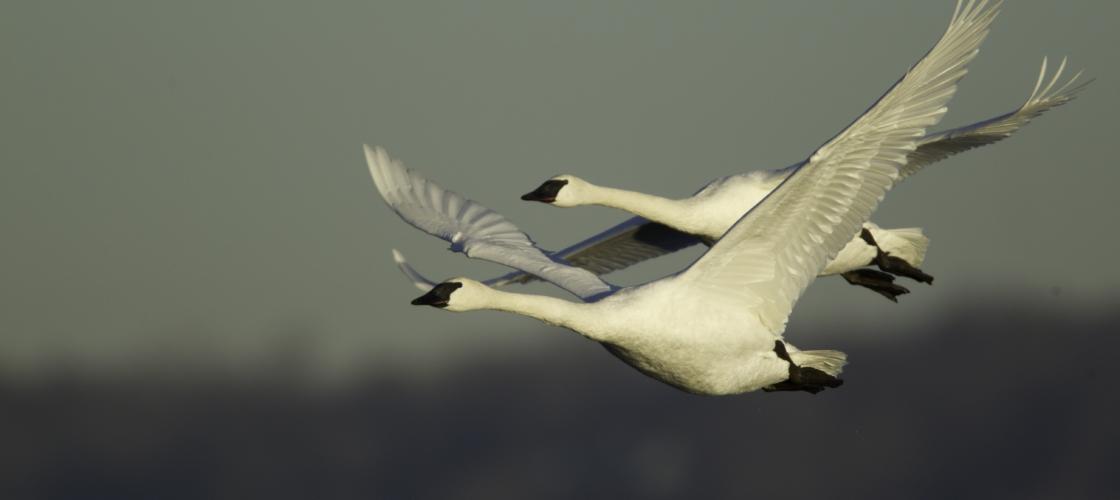An airplane pilot sits behind a panel of instruments that help get the plane safely to its destination. Migrating birds, it seems, use some of the same tools.
Birds, of course, don’t have mechanical instruments, just their brains and senses. These amazing creatures find their way to far-off destinations using a variety of cues.
By observing the positions of the sun and the stars, in conjunction with an internal sense of time, migrating birds are able to determine their position on the surface of the earth. If it is overcast, they can still detect polarized light from the sun. The ears of songbirds can hear far lower frequency sounds, those that travel hundreds of miles, than the ears of humans.
This may enable a bird to plot its course by hearing the sounds of seashores and distant mountain ranges. Doves actually have metal in their brains that enable them to navigate by sensing differences in the earth’s magnetic field. As birds approach their destinations, they may be able to recognize landmarks or even smells.
Miraculously, through use of these many cues, the swallow wintering in Brazil can travel 5,000 miles each spring and return precisely to your backyard!
Birding Tips and Tools
Whether birding from your backyard or further out, try these tips and tools to help you get started.
- Choose the right binoculars. Choose binoculars that have a right eyepiece that can be adjusted for individual eye differences and that also have central focusing to adjust for various distances. Many birders prefer a magnification of 8x42 or 10x42.
- Get a bird field guide. Some birders prefer field guides with photographs; others like illustrations. Our online field guide is a good place to start identifying birds you see in Missouri.
- Spotting scopes can help! Spotting scopes offer higher levels of magnification than binoculars.
- Learn bird songs. Knowing bird sons will expand your ability to tell one species from another. Often birds remain hidden and sound is the only way to identify them. Song differences are also the best way to identify certain look-alike species, such as alder and willow flycatchers.
- A few bird identification apps are free. These include Merlin Bird ID by the Cornell Lab of Ornithology and the Audubon app, but most high-quality apps cost a fee so creators can be competitive with book guides. Most of these apps have a one-time fee of less than $10.
Discover more birding tips and tools.








Recent Posts
























